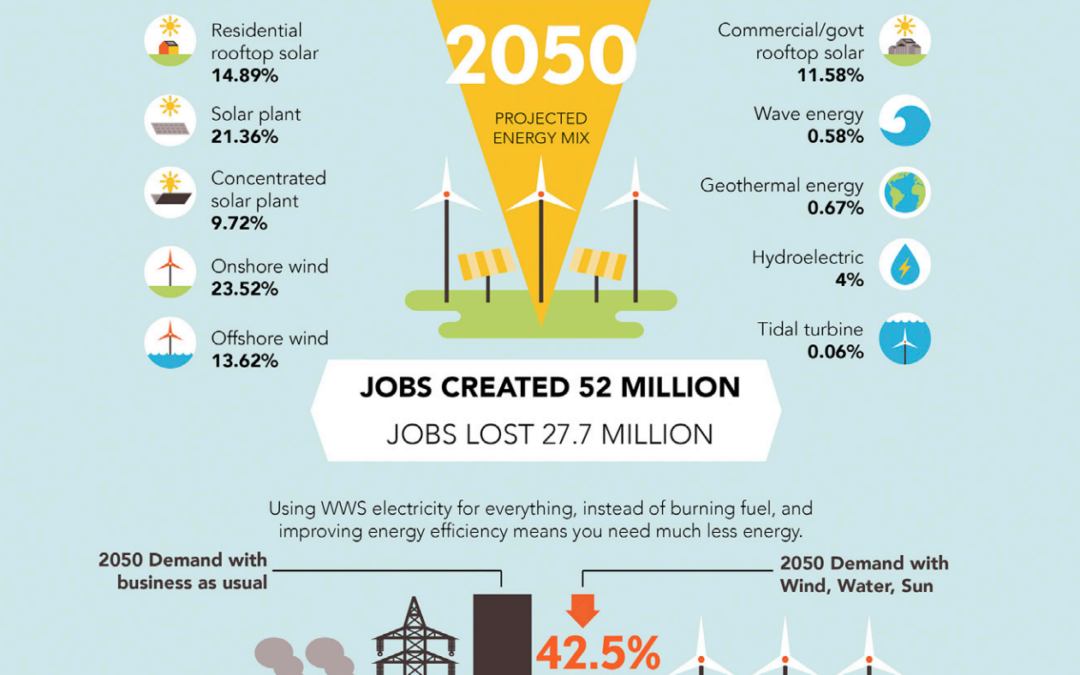
By 2050, the US could be entirely run on clean energy. The potential to do so is real. The United States currently relies on a mix of renewable and fossil fuel energy. A recent study at Stanford led by Mark Jacobson, professor of civil and environmental engineering examines current energy demand in each state and projects future energy demands.
To determine the exact power demands of each state, Jacobson’s has created a model that uses the current electricity consumption of each state and sector. He converts current fossil fuel energy sources into electric devices, which are powered by clean sources. This allows him to estimate the amount of renewable energy needed to supply the country’s electricity needs in 2050. The model also accounts for storage and other costs. With enough time, the US can completely switch over to renewable energy by 2050.
To make the transition from fossil fuel energy to clean energy, researchers focused on the renewable resources available in each state. This included solar, wind, hydro, and even nuclear energy. Using this information, the researchers created a grid integration model that matches renewable energy supply to demand for every 30 second interval. This plan accounts for the savings in energy bills incurred due to improved efficiency of existing hydroelectric dams.
The transition from fossil fuel to renewable energy should be complete in thirty-five to forty years, according to the study. The authors factored in population growth and energy efficiency improvements in their calculations. The road map was first published in 2015 but has since been updated for more detailed data. In addition to the timeline, the researchers created an interactive map for the US to illustrate how much progress can be made to achieve their goal.
Currently, renewable resources will generate about 19 percent of the country’s electricity by 2035. But the transition must be more rapid, as the transition to a 100 percent renewable grid can be achieved without blackouts and at a lower cost than the current system.
To achieve this goal, the US should stop using fossil fuels and nuclear reactors. Although nuclear reactors do not produce greenhouse gases, they are expensive and dangerous. They also produce mountains of radioactive waste. At the same time, the US should adopt battery storage systems and increase energy efficiency.

